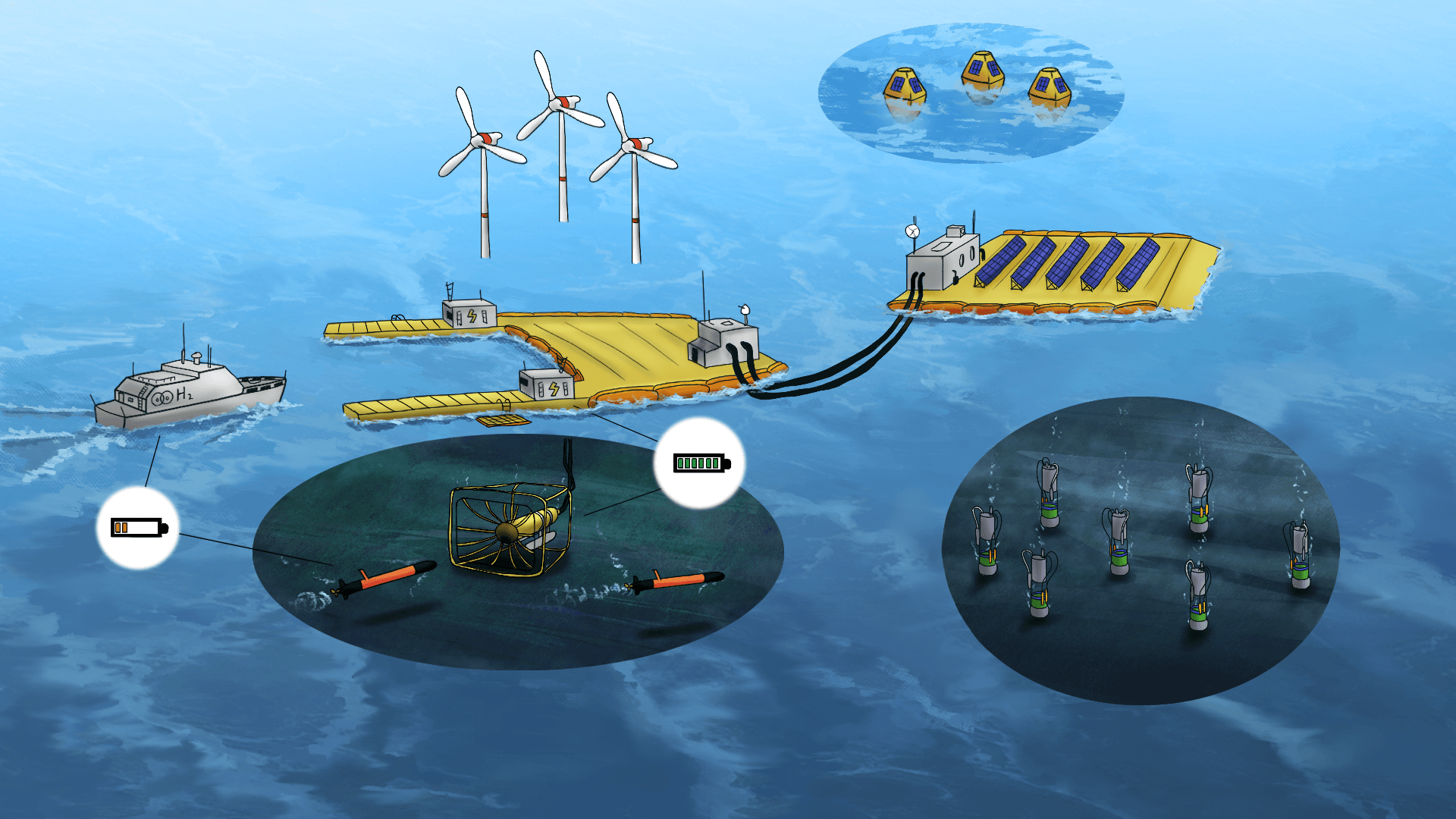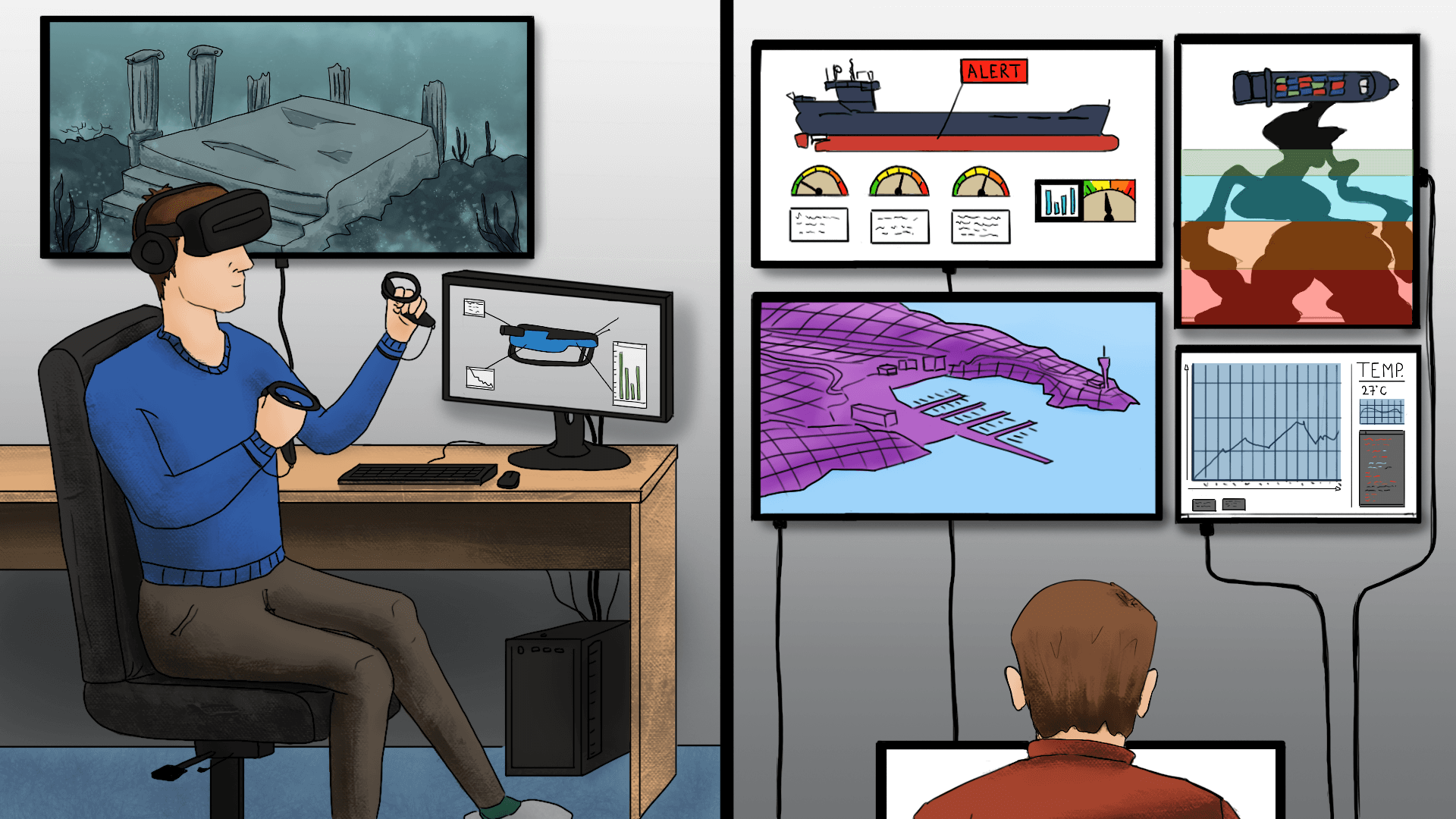Research areas
Driving Innovation Across the Blue Economy
Our research focuses on four transformative areas designed to advance the sustainable blue economy through cutting-edge technologies. Each area leverages international collaborations, local expertise, and a dedication to environmental stewardship.

Maritime Robotics and Autonomous Systems
We explore and develop advanced maritime robotics that operate seamlessly underwater, on the surface, and in aerial domains. By integrating AI-driven sensor fusion, our teams push the boundaries of autonomy to enable efficient inspection, surveying, and mapping of marine environments. These innovations also support safer human-robot collaboration, from lifesaving interventions to ship hull inspections. Through physics-informed neural networks, we enhance real-time control and navigation, while eco-friendly mission planning ensures a reduced carbon footprint. The result is a comprehensive approach to autonomous systems that revolutionizes marine operations, supports industry growth, and preserves delicate ocean ecosystems.

Maritime Green Endurance
Long-term sustainability is at the core of our Maritime Green Endurance research. We investigate renewable energy solutions—such as solar, wind, and wave power—and integrate them into docking and recharging platforms for unmanned vehicles. Beyond conventional methods, our team is pioneering biochemical energy harvesting for low-power sensors and exploring blue hydrogen fuel cells to extend vessel range and reduce emissions. These innovations help foster remote power solutions for aquaculture farms, offshore energy platforms, and island communities. By marrying endurance and environmental responsibility, we strive to drive the blue economy toward greener and more cost-effective practices.

Maritime Internet of Things (IoT)
In the Maritime IoT arena, we connect networks of physical devices—sensors, actuators, and autonomous platforms—to enable real-time data sharing in challenging aquatic environments. Our work centers on overcoming obstacles like limited underwater bandwidth, high-latency acoustic signals, and harsh weather conditions. Through data-driven signal processing and cybersecure communication protocols, we create resilient systems that enhance operational efficiency. Key applications include smart marinas, automated fish escape sensors, environmental monitoring stations, and disaster prevention through early warning systems. By harnessing IoT technologies, we streamline decision-making for both industry stakeholders and policy-makers, contributing to safer and smarter marine activities.

Maritime Digital Twins
Maritime Digital Twins are immersive virtual models that mirror real-world oceanic and coastal environments. We collect vast amounts of heterogeneous data from sensors, robotics, and IoT networks to build adaptive simulations for training, planning, and remote maintenance. By leveraging advanced analytics and machine learning, our digital twin frameworks support anomaly detection, maritime spatial planning, and even augmented reality for underwater cultural heritage sites. This interconnected system of virtual replicas empowers researchers, industry partners, and policymakers to test various scenarios—reducing risks, optimizing resource allocation, and informing better decision-making. Ultimately, Maritime Digital Twins open new frontiers in sustainable ocean management and innovation.
